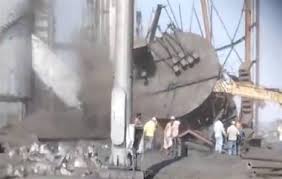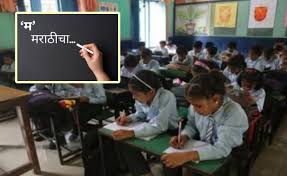
Natural disaster or 'dragon's' handiwork... Who is responsible for 128 deaths in Tibet earthquake?
New Delhi:The death toll due to the powerful earthquake in China's Tibet autonomous region has risen to 128. 188 people have been injured. According to China's official news agency Xinhua, the earthquake occurred at 9:05 am on Tuesday (6:30 am Indian time). Its epicenter was in Tingri, a rural county. It is known as the northern gateway to the Mount Everest region. The epicenter of the earthquake was at a depth of 10 km (6.2 miles). The US Geological Survey has put the magnitude of the earthquake at 7.1. The tremors were also felt in neighboring Nepal, Bhutan and parts of India. Meanwhile, this earthquake in Tibet has once again brought China's plan to build a big dam in this region under question.
The impact of the earthquake was felt in the Shigatse region of Tibet, where 800,000 people live. The region is administered by Shigatse. It is the traditional residence of the Panchen Lama, one of the most important figures in Tibetan Buddhism.
The epicenter was about 80 kilometers from Everest
The southwestern parts of China, Nepal and northern India are often affected by earthquakes due to the collision of the Indian and Eurasian tectonic plates. Tuesday's epicenter was about 80 kilometers (50 miles) north of Mount Everest, the world's highest mountain.
188 people were injured in the devastation caused by the earthquake.
21 earthquakes have occurred in the Lhasa block
Since 1950, 21 earthquakes of magnitude 6 or more have occurred in the Lhasa block, the largest of which was the 6.9 magnitude earthquake in Mainling in 2017. In 2015, a 7.8 magnitude earthquake struck near Nepal's capital Kathmandu, killing nearly 9,000 people in the country's worst earthquake ever. Thousands were injured. Among the dead were at least 18 people killed after being hit by snowfall at Mount Everest Base Camp.
China building hydroelectric dam on Zangbo River
Menling is located in the lower reaches of Tibet's Yarlung Zangbo River, where China is planning to build the world's largest hydroelectric dam. India has also expressed its concerns about this project. However, Beijing is moving ahead with its plan.
China defends its project
China said on Monday that the dam to be built on the Brahmaputra River will not have any negative impact on India and Bangladesh. This was said after New Delhi registered its protest over the proposed project.
Chinese Foreign Ministry spokesman Guo Jiakun told a media briefing, "The construction of the hydroelectric project by China on the Yarlung Tsangpo River (the Tibetan name for the Brahmaputra River) has undergone rigorous scientific verification. It will not have any negative impact on the ecosystem, environment, geology and water resources of the downstream countries."
Since 1950, 21 earthquakes of magnitude 6 or more have occurred in the Lhasa block.
Jiakun said that this dam will contribute to downstream disaster prevention, mitigation and climate change response to some extent.
India had opposed the project
Earlier, India had expressed its opposition to this dam project. Foreign Ministry spokesperson Randhir Jaiswal said on Friday, "We have seen the information released by Xinhua on December 25, 2024 regarding a hydropower project on the Yarlung Tsangpo River (Brahmaputra River) in the Tibet Autonomous Region of China. We have the right over the water of the river. As a lower riparian country, we have consistently expressed our views and concerns to the Chinese side through expert level and diplomatic channels regarding mega projects on rivers in their territory." Jaiswal said, "These concerns have been reiterated after the latest report, as well as the need for transparency and consultation with the lower countries. The Chinese side has been urged to ensure that the interests of the lower countries of the Brahmaputra are not harmed by activities in the upper areas. We will continue to monitor and take necessary measures to protect our interests." Level-3 emergency declared A large number of people are trapped in the debris after the earthquake. Rescue operations are underway. China's State Council has sent a task force to the earthquake-affected area. Meanwhile, a level-3 emergency has been declared.
The impact of the earthquake was felt in Shigatse region of Tibet, where 800,000 people live.
Infrastructure badly damaged
The infrastructure of the area has been badly damaged due to the earthquake, which has affected the supply of both electricity and water here.
China closes Everest's tourist point
China has closed the tourist point of its part of Mount Everest after a 6.8 magnitude earthquake struck Dingri County of Tibet Autonomous Region. Mount Everest is also known as Mount Qomolangma. Located on the China-Nepal border, Mount Qomolangma is at an altitude of more than 8,840 meters, the northern part of which is located in Tibet. China calls it Jizang. Dingri is the base camp of the world's highest peak.
New Delhi:The death toll due to the powerful earthquake in China's Tibet autonomous region has risen to 128. 188 people have been injured. According to China's official news agency Xinhua, the earthquake occurred at 9:05 am on Tuesday (6:30 am Indian time). Its epicenter was in Tingri, a rural county. It is known as the northern gateway to the Mount Everest region. The epicenter of the earthquake was at a depth of 10 km (6.2 miles). The US Geological Survey has put the magnitude of the earthquake at 7.1. The tremors were also felt in neighboring Nepal, Bhutan and parts of India. Meanwhile, this earthquake in Tibet has once again brought China's plan to build a big dam in this region under question.
The impact of the earthquake was felt in the Shigatse region of Tibet, where 800,000 people live. The region is administered by Shigatse. It is the traditional residence of the Panchen Lama, one of the most important figures in Tibetan Buddhism.
The epicenter was about 80 kilometers from Everest
The southwestern parts of China, Nepal and northern India are often affected by earthquakes due to the collision of the Indian and Eurasian tectonic plates. Tuesday's epicenter was about 80 kilometers (50 miles) north of Mount Everest, the world's highest mountain.
188 people were injured in the devastation caused by the earthquake.
21 earthquakes have occurred in the Lhasa block
Since 1950, 21 earthquakes of magnitude 6 or more have occurred in the Lhasa block, the largest of which was the 6.9 magnitude earthquake in Mainling in 2017. In 2015, a 7.8 magnitude earthquake struck near Nepal's capital Kathmandu, killing nearly 9,000 people in the country's worst earthquake ever. Thousands were injured. Among the dead were at least 18 people killed after being hit by snowfall at Mount Everest Base Camp.
China building hydroelectric dam on Zangbo River
Menling is located in the lower reaches of Tibet's Yarlung Zangbo River, where China is planning to build the world's largest hydroelectric dam. India has also expressed its concerns about this project. However, Beijing is moving ahead with its plan.
China defends its project
China said on Monday that the dam to be built on the Brahmaputra River will not have any negative impact on India and Bangladesh. This was said after New Delhi registered its protest over the proposed project.
Chinese Foreign Ministry spokesman Guo Jiakun told a media briefing, "The construction of the hydroelectric project by China on the Yarlung Tsangpo River (the Tibetan name for the Brahmaputra River) has undergone rigorous scientific verification. It will not have any negative impact on the ecosystem, environment, geology and water resources of the downstream countries."
Since 1950, 21 earthquakes of magnitude 6 or more have occurred in the Lhasa block.
Jiakun said that this dam will contribute to downstream disaster prevention, mitigation and climate change response to some extent.
India had opposed the project
Earlier, India had expressed its opposition to this dam project. Foreign Ministry spokesperson Randhir Jaiswal said on Friday, "We have seen the information released by Xinhua on December 25, 2024 regarding a hydropower project on the Yarlung Tsangpo River (Brahmaputra River) in the Tibet Autonomous Region of China. We have the right over the water of the river. As a lower riparian country, we have consistently expressed our views and concerns to the Chinese side through expert level and diplomatic channels regarding mega projects on rivers in their territory." Jaiswal said, "These concerns have been reiterated after the latest report, as well as the need for transparency and consultation with the lower countries. The Chinese side has been urged to ensure that the interests of the lower countries of the Brahmaputra are not harmed by activities in the upper areas. We will continue to monitor and take necessary measures to protect our interests." Level-3 emergency declared A large number of people are trapped in the debris after the earthquake. Rescue operations are underway. China's State Council has sent a task force to the earthquake-affected area. Meanwhile, a level-3 emergency has been declared.
The impact of the earthquake was felt in Shigatse region of Tibet, where 800,000 people live.
Infrastructure badly damaged
The infrastructure of the area has been badly damaged due to the earthquake, which has affected the supply of both electricity and water here.
China closes Everest's tourist point
China has closed the tourist point of its part of Mount Everest after a 6.8 magnitude earthquake struck Dingri County of Tibet Autonomous Region. Mount Everest is also known as Mount Qomolangma. Located on the China-Nepal border, Mount Qomolangma is at an altitude of more than 8,840 meters, the northern part of which is located in Tibet. China calls it Jizang. Dingri is the base camp of the world's highest peak.
The impact of the earthquake was felt in the Shigatse region of Tibet, where 800,000 people live. The region is administered by Shigatse. It is the traditional residence of the Panchen Lama, one of the most important figures in Tibetan Buddhism.
The epicenter was about 80 kilometers from Everest
The southwestern parts of China, Nepal and northern India are often affected by earthquakes due to the collision of the Indian and Eurasian tectonic plates. Tuesday's epicenter was about 80 kilometers (50 miles) north of Mount Everest, the world's highest mountain.
188 people were injured in the devastation caused by the earthquake.
21 earthquakes have occurred in the Lhasa block
Since 1950, 21 earthquakes of magnitude 6 or more have occurred in the Lhasa block, the largest of which was the 6.9 magnitude earthquake in Mainling in 2017. In 2015, a 7.8 magnitude earthquake struck near Nepal's capital Kathmandu, killing nearly 9,000 people in the country's worst earthquake ever. Thousands were injured. Among the dead were at least 18 people killed after being hit by snowfall at Mount Everest Base Camp.
China building hydroelectric dam on Zangbo River
Menling is located in the lower reaches of Tibet's Yarlung Zangbo River, where China is planning to build the world's largest hydroelectric dam. India has also expressed its concerns about this project. However, Beijing is moving ahead with its plan.
China defends its project
China said on Monday that the dam to be built on the Brahmaputra River will not have any negative impact on India and Bangladesh. This was said after New Delhi registered its protest over the proposed project.
Chinese Foreign Ministry spokesman Guo Jiakun told a media briefing, "The construction of the hydroelectric project by China on the Yarlung Tsangpo River (the Tibetan name for the Brahmaputra River) has undergone rigorous scientific verification. It will not have any negative impact on the ecosystem, environment, geology and water resources of the downstream countries."
Since 1950, 21 earthquakes of magnitude 6 or more have occurred in the Lhasa block.
Jiakun said that this dam will contribute to downstream disaster prevention, mitigation and climate change response to some extent.
India had opposed the project
Earlier, India had expressed its opposition to this dam project. Foreign Ministry spokesperson Randhir Jaiswal said on Friday, "We have seen the information released by Xinhua on December 25, 2024 regarding a hydropower project on the Yarlung Tsangpo River (Brahmaputra River) in the Tibet Autonomous Region of China. We have the right over the water of the river. As a lower riparian country, we have consistently expressed our views and concerns to the Chinese side through expert level and diplomatic channels regarding mega projects on rivers in their territory." Jaiswal said, "These concerns have been reiterated after the latest report, as well as the need for transparency and consultation with the lower countries. The Chinese side has been urged to ensure that the interests of the lower countries of the Brahmaputra are not harmed by activities in the upper areas. We will continue to monitor and take necessary measures to protect our interests." Level-3 emergency declared A large number of people are trapped in the debris after the earthquake. Rescue operations are underway. China's State Council has sent a task force to the earthquake-affected area. Meanwhile, a level-3 emergency has been declared.
The impact of the earthquake was felt in Shigatse region of Tibet, where 800,000 people live.
Infrastructure badly damaged
The infrastructure of the area has been badly damaged due to the earthquake, which has affected the supply of both electricity and water here.
China closes Everest's tourist point
China has closed the tourist point of its part of Mount Everest after a 6.8 magnitude earthquake struck Dingri County of Tibet Autonomous Region. Mount Everest is also known as Mount Qomolangma. Located on the China-Nepal border, Mount Qomolangma is at an altitude of more than 8,840 meters, the northern part of which is located in Tibet. China calls it Jizang. Dingri is the base camp of the world's highest peak.

.jpg)
















